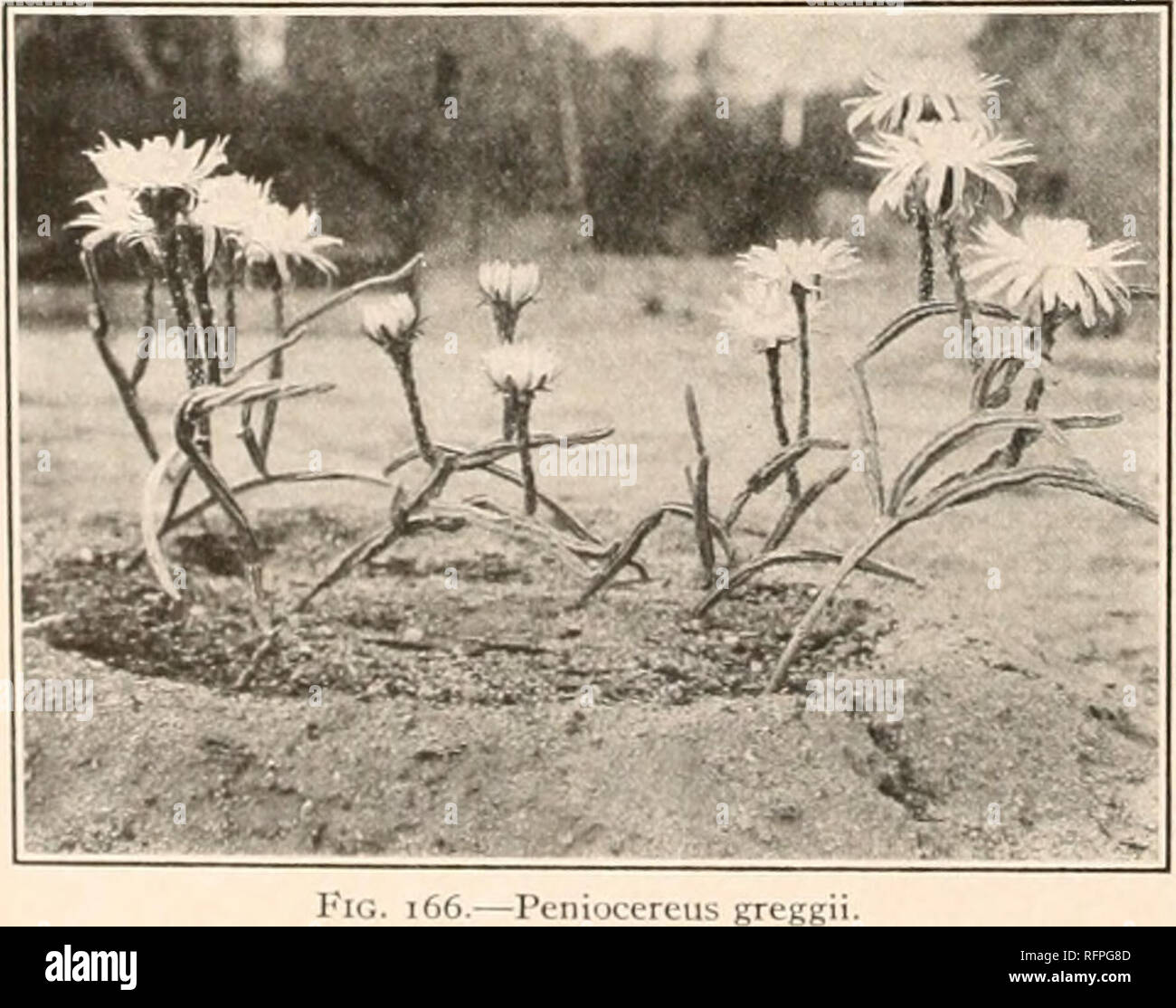. Carnegie Institution of Washington publication. 112 THlv CACTACEAIv. 4. Wilcoxia papillosa sp. n<»v. Tap-root spindle-shaped, fleshy, 4 to 7 cm. long, 2 cm. in diameter, this giving off long fibrous units; stems slriuk'r with few branches, 3 to 4 dm. long, perhaps longer, 3 105 mm. in diameter, glabrous, but the whole surface covered with minute papillae; ribs low, indistinct, perhaps 3 to 5; auolrs small, distant, i to 3 cm. long, white-woolly; spines in clusters of 6 to 8, minute, yellowish brown, bulbose at base, i to 3 mm. long; flowers scarlet, 4 to 5 cm. long; scales on the ovary an

Image details
Contributor:
Book Worm / Alamy Stock PhotoImage ID:
RFPG8DFile size:
7.1 MB (310.6 KB Compressed download)Releases:
Model - no | Property - noDo I need a release?Dimensions:
1781 x 1403 px | 30.2 x 23.8 cm | 11.9 x 9.4 inches | 150dpiMore information:
This image is a public domain image, which means either that copyright has expired in the image or the copyright holder has waived their copyright. Alamy charges you a fee for access to the high resolution copy of the image.
This image could have imperfections as it’s either historical or reportage.
. Carnegie Institution of Washington publication. 112 THlv CACTACEAIv. 4. Wilcoxia papillosa sp. n<»v. Tap-root spindle-shaped, fleshy, 4 to 7 cm. long, 2 cm. in diameter, this giving off long fibrous units; stems slriuk'r with few branches, 3 to 4 dm. long, perhaps longer, 3 105 mm. in diameter, glabrous, but the whole surface covered with minute papillae; ribs low, indistinct, perhaps 3 to 5; auolrs small, distant, i to 3 cm. long, white-woolly; spines in clusters of 6 to 8, minute, yellowish brown, bulbose at base, i to 3 mm. long; flowers scarlet, 4 to 5 cm. long; scales on the ovary and lie iwer-tubc small, linear-cuspidate, the lower ones naked or nearly so, those at the top of the tube with long white wool and several brown bristles (8 to 12 mm. long) in their axils; perianth-segments 2 cm. long; fruit probably spineless. Collected by C. A. Purpus at Culiacan, Sinaloa, Mexico, October i, 1904, and now deposited in the Herbarium of the University of California (No. 160654), and in the same vState at Tinamaxtita, San Ignacio, altitude 1, 340 meters, May 20, 1919, by a Mexican Commission which was studying the natural resources of Sinaloa (No. 848). The plant is called cardoncillo. 17. PENIOCEREUS (Berger) Britten and Rose, Contr. U. S. Nat. Herb. 12: 428. 1909. Plants low, slender, from an enormous, fleshy, turnip-shaped root; stems and branches usually 4 or 5-angled, rarely 3 or 6-angled; spines of all the areoles similar; flowers very large for the size of the plant, funnelform, nocturnal, white, the outer perianth-segments tinged with red; tube of flower long, slender, with long hairs in the axils of the upper scales, but with clusters of spines on the lower part as also on the ovary; fruit spin}', ovoid, long-pointed, bright scarlet, fleshy, and edible; seeds black, rugose, with a large oblique hilum. A monotypic genus of the southwestern United States and northern Mexico. The generic name is from the Greek, signifying thread-cereus. 1. Peniocereus gregg